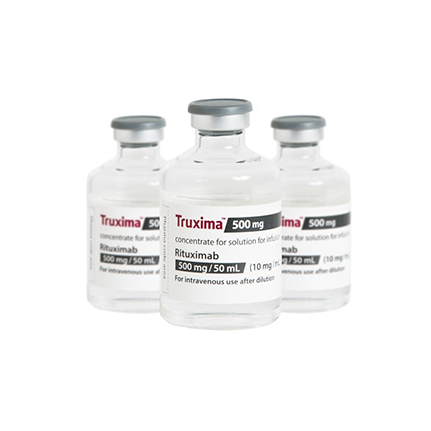The objective was to project incremental cost differences between [IV Truxima] and [SC-Rituxan] over 1 year for a hypothetical 5-million-member US healthcare insured (Medicare) population.
- Bone Health
- Immunology
- Hematology
- Respiratory
- Dermatology
- Diabetes
- Gastroenterology
- Neurology
- Oncology
- Ophthalmology
- Rare Disease
- Rheumatology
Budget Model Predicts Savings for Switch to Rituximab Biosimilar in NHL, CLL
Sizeable savings per patient with non-Hodgkin lymphoma (NHL) and chronic lymphocytic leukemia (CLL) were anticipated by a Medicare savings model.
A model of rituximab use that involved transitioning a portion of patients to intravenous rituximab biosimilar (Truxima) from a subcutaneous originator rituximab (Rituxan) formulation demonstrated savings of $2359 to $8186 per patient with non-Hodgkin lymphoma (NHL) or chronic lymphocytic leukemia (CLL), investigators reported at this year's American Society of Clinical Oncology meeting.
Truxima is a CD20-directed monoclonal antibody and was the first of 3 rituximab biosimilars approved in the United States.
Investigators based their savings analysis on a 5-million-member insured population (Medicare) in which 972 patients would be treated for NHL or CLL during a 1-year span. Of those patients, 49 would receive subcutaneous rituximab/hyaluronidase (SC-R). For purposes of the study, investigators assumed that 25% of the 49 patients (n = 13) would receive intravenous biosimilar treatment (IV-R-BIOSIM).
The 1-year model factored in drug and administration costs and assumed efficacy and safety would be equivalent between the 2 cohorts. For the IV-R-BIOSIM dosing, the investigators assumed body surface area of 1.8m2.
They also assumed annual dose counts (with either IV-R-BIOSIM or SC-R) of 10 for untreated follicular lymphoma (FL) with maintenance; 8, untreated FL without maintenance, relapsed/refractory FL, or untreated diffuse large B-cell lymphoma; and 6, CLL. Duration of IV-R-BIOSIM infusion was assumed to be 3 hours. SC-R costs included an initial IV Rituxan dose.
For the 13 patients who received the hypothetical IV-R-BIOSIM dosing, estimated total 1-year savings were $57,864. The investigators said their budget impact model was most sensitive to low or high body surface area dosing and the proportion of patients with CLL.
“These findings demonstrate the potential economic benefits of IV-R-BIOSIM vs SC-R that may result in expanded access to rituximab therapy,” they said.
Reference
James E, Trautman H, McBride A, Choudhry A, Thompson S. US budget impact analysis of an intravenous rituximab biosimilar versus subcutaneous rituximab for the treatment of non-Hodgkin lymphoma (NHL) and chronic lymphocytic leukemia (CLL). Presented at: ASCO 2021; June 3-7, 2021. Abstract e18821.
Newsletter
Where clinical, regulatory, and economic perspectives converge—sign up for Center for Biosimilars® emails to get expert insights on emerging treatment paradigms, biosimilar policy, and real-world outcomes that shape patient care.

